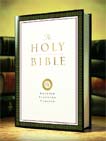Update Oct-06: Some clarifications and corrections added. A new example was added as well.
This post from Challies.com got me thinking. The post is well-argued and presents a good position even when the writer admits his lack of knowledge.
One of the indicators of really lousy rhetorics and weak argumentation is when one of the sides of the debate deliberately chooses to obfuscate some of the issues. It almost seems as if that side is well aware of crippling flaws in their exposition, and yet they refuse to acknowledge the fact out of some hidden interest. They prefer their victory at any price rather than truth.
The most egregious examples comes from the life and healthcare sciences, and especially bioethics (why is that I am not surprised here?). We will see some of the examples and how the obfuscation is at work.
1.Let’s begin with the subject of Challies’ post: contraception. After living as a committed bachelor (involuntarily, but committed, anyway) for a long time, I got married less than two years ago. When speaking with my then-fiancée, one of the issues that surfaced was this. How we would approach parenting and births? Should we use contraception? My wife is Roman Catholic, so she was and still is firmly opposed to all artificial contraception on principle; I am somewhat more open, but after some study I’ve concluded that any contraception other than the natural methods are unacceptable either on moral or practical grounds.
One of the examples of the moral unacceptability of several contraceptives is the pill. Challies, in his post, pointed out the abortive nature of the pill, and he is right. The intake of progesterone and estrogen works in many ways in the woman’s body, but it is an established fact that one of the effects of this is the prevention of the implantation of the fertilized egg. This was one of my biggest reasons to reject any kind of hormonal contraceptive treatment.
The other one is the intrauterine device (IUD), which, as one of Challies’ commenters pointed out, works as a contraceptive by being an abortifacient. In other words: The IUD is effective because it blocks the implantation of the fertilized egg. It does not block fertilization.
If the fact that life begins at conception is accepted as a given, then these contraceptives cannot be accepted as sound on moral grounds. But the manufacturers try very hard to hide these facts of the pill and the IUD, often burying it either on tons of hype or technical jargon. A honest approach would expect such issues, so important to a great portion of their consumers’ belief, to be acknowledged.
2. Another egregious example that is not only obfuscated by deceptive rhetorics, but also by the sheer noise of the debate, is the stem-cell issue. Can the use of stem cells for the purposes of research be deemed as acceptable? Many people –an now, with Election Day approaching fast in the U.S.– would try to convince us that the use of stem cells is good and the cure of all evils in this world; but the ugly, bad, Middle-Age-minded Christian fundies and right-wing wackos are obscurantist people, set against the progress of humanity and the alleviation of suffering, and trying to impose their absurd beliefs on the poor Americans. So, the good, compassionate, enlightened champions of science and progress must Inherit the Wind and Eppur Si Muove all over again, Kleenex box included. Right? Not!
The Christian Church is not opposed to scientific research. Even more, we as Christians are not opposed to the use of stem cells in research. The problem comes with embryonic stem cells, that is, cells harvested from human embryos. We find this unacceptable because it tampers with the realm of an human embryo which has all the dignity and the rights of a person. The researchers are perfectly free to use adult stem cells obtained in ethical ways. But embryonic stem cells, while very similar in the scientific realm, are a totally different issue in the moral sphere. (Of course, the question of whether stem-cell research will definitely lead us to the cure for diseases such as Alzheimer’s is totally debatable in and out of itself). But not. All we get is “Christians are anti-stem-cell. Christians are anti-science.” Yuck.
3. Another obfuscated area is that of food additives, and especially, sweeteners. Two cases come to my mind: Aspartame, and sucralose.
a) Aspartame is the food sweetener known commercially as NutraSweet. It is a methyl ester of aspartic acid and phenylalanine (and that’s why you should read a warning for phenylketonurics in foods containing it). It’s generally very convenient, providing good sweetening value at no calories.
The problem? The fact that it’s a methyl ester, that’s the problem. When exposed to the acid medium of the stomach, at least a small amount of aspartame is going to be hydrolized, thus releasing methanol to the organism, which is extremely toxic. Did you experience some dizziness, headache, or nausea after taking NutraSweet-sweetened foods? Well, now you know the culprit. What keeps us safe is that the amounts of NutraSweet required to sweeten foods provide a very small amount of methanol, but some people are more sensible than others. I don’t have any problem taking NutraSweet, but my younger sister is. She cut down on all beverages with NutraSweet.
The obfuscation comes here: NutraSweet will tell you that the methyl ester bond is very safe and will not break. They will insist a lot in this issue, often reinforcing it with words like “extremely safe”, “reassuring”, “proven”, etc. How ridicule! Think for a moment of this: Fats (triglicerydes) are esters. Far more stable esters, I might add. And yet, they are hydrolized not only in the intestines, but also in the stomach. And NutraSweet manufacturers would like to make us believe that a methyl ester is safer! Meanwhile they also are offering for sale this nice bridge at Brooklyn and these other at Golden Gate…
b) The other example of obfuscated sweeteners is sucralose, better known as Splenda. Splenda is aggressively marketed as the ultimate sweetener, a safe alternative to sugar with no calories, good taste, and resistance to heating. Sucralose is a sucrose derivative that contains a galactose instead of glucose in the hexose part, and substitutes three hydroxyl groups for chlorine atoms.
When I saw the chemical structure of sucralose my jaw dropped. Who on earth would want to eat a chlorinated sugar?!?! Last time I saw covalent chlorine bonds in contact with life, these were poison. Check the structure of DDT or Gamexane if you like. But no, the good fellows at some chemical company decided that it would be good for us as a sweetener!
Now, here’s when the obfuscation becomes apparent. The website glosses over the chlorination of sucralose, burying it in marketing hype: “The process selectively replaces three hydrogen-oxygen groups on the sugar molecule with three chlorine atoms. Chlorine is present naturally in many of the foods and beverages that we eat and drink every day ranging from lettuce, mushrooms and table salt. In the case of sucralose, its addition converts sucrose to sucralose, which is essentially inert.”
Bollocks. This smells worse than horse manure. Of course that chlorine does occur naturally in every inch of life. But this isn’t covalent chlorine. This is ionic chlorine, present in the form of chloryde ion, forming ionic bonds with positive ions such as sodium, potassium or ammonium. This is obfuscation to the highest! Let’s look at this: Nitrogen also occurs naturally and in gas form is very inert and safe. But nitrogen also occurs in cyanide, and that’s not safe, is it?
The fact is, you are bound to find chlorine atoms everywhere in life, because chlorine is a chemical element and a building block of life’s chemical structure. But you won’t find it as a covalent bond, save perhaps very special cases. I say again, if you want to see chlorine like that of sucralose, go check Gamexane or DDT and come back.
4. While I was sleeping, it dawned on me another egregious example of obfuscation: cholesterol. It is pretty well known that high levels of cholesterol from LDL (known as the “bad” cholesterol) leads to a much higher risk of heart disease and strokes due to the formation of cholesterol deposits in the walls of blood vessels. Granted. What you should do to avoid it? Well, according to the obfuscated propaganda, you should avoid animal foods, animal fats, and foods containing cholesterol.
This surely sounds right. But the following are facts that some people would like you to ignore:
- Cholesterol is essential for life. Cholesterol is a steroid alcohol which is thought to give firmness to cell membranes. It is so essential that there are no known “lack of cholesterol” deficiencies; a fertilized egg without the ability to synthesize cholesterol would not survive a minute.
- Cholesterol is synthesized from Acetyl-CoA, the very center of metabolism. Practically anything will be metabolized into Acetyl-CoA.
These are just two of the facts of cholesterol that some people would not like you to know. Cholesterol is not poison; it is essential for life! And it is made from Acetyl-CoA, so, sorry buddy, you’re out of luck: if for some reason you have a tendency to get high levels of cholesterol, dietary measures would not be directly effective: Cholesterol is made from Acetyl-CoA, and anything that gets eaten is converted into it. I’m sure most of the “health tips” or information don’t have this information.
But, then, what can you do to reduce cholesterol levels? There are some measures. First of all, let me say what is not. Reducing your dietary cholesterol intake (i.e., cutting on animal fats, dairy or eggs) will most likely not work. Only 10% of your total cholesterol is taken from diet. The rest is built by your body. For the same reason, reducing just the intake of animal fats will not work. You could reduce your animal fat, but you would still get Acetyl-CoA from vegetable and other sources, and this very well could be used for the synthesis of cholesterol.
One might think, then, that reducing Acetyl-CoA is the key to reduce cholesterol. That’s partially right. You can reduce Acetyl-CoA by reducing your total intake of calories. It’s not the animal fats. It’s not saturated fats, either, nor the dietary cholesterol. If you want to reduce your cholesterol by cutting your supply of Acetyl-CoA, then you should cut down your calories from any source.
You can also take enzyme inhibitors that inhibit the buildup of cholesterol, such as lovastatin and others. They are effective to a point.
Another approach is the interruption of the “enterohepatic cycle”. This stems from the fact that the body is unable to completely break down cholesterol; the only way to dispose cholesterol in the body is by converting it into bile salts, which then go into the small intestine to help in the digestion of fats. Some of these bile salts get into the blood again, and they’re converted back into cholesterol, and others go out with the feces. The process by which cholesterol is converted into bile salts that are excreted into the intestinal lumen, and then these bile salts are absorbed back into the blood and later converted back into cholesterol is called the “enterohepatic cycle”.
It is possible to break down the cycle by using resins, such as Colestipol and Cholestyramine. These resines bind bile salts into their molecular surface, and, since they cannot be digested or absorbed by the body, they get out with the feces, taking with them the bulk of bile salts. This is a natural way of cutting down cholesterol levels. Of course, the resines have their side effects such as constipation. But these could be worked out.
It is telling that one does not hear of these alternatives more often.
Now, I wonder. Why is that someone finds the need to obfuscate facts essential to the discussion of issues? Why don’t simply acknowledge, and try to address the issues these facts raise in a more honest way? It surely baffles me.
 On November 9, the Mozilla Foundation released version 1.0 final of the Mozilla Firefox Web browser. This is a browser noted for being lightweight, fast, stable and secure. It also features popup blocking, tabbed browsing (try it, it’s incredible) and an excellent user interface and extensions architecture.
On November 9, the Mozilla Foundation released version 1.0 final of the Mozilla Firefox Web browser. This is a browser noted for being lightweight, fast, stable and secure. It also features popup blocking, tabbed browsing (try it, it’s incredible) and an excellent user interface and extensions architecture.
 Few Bible quotes get more impressive in its despair and hopelessness than this:
Few Bible quotes get more impressive in its despair and hopelessness than this: October is a month where money harvesting is just a memory from months ago. Worse off, all the subsistence crops that were ‘harvestable’ in wintertime (such as peas, tapioca, or beans) are long gone; and the summer subsistence crops (grapes, watermelons, and the like) are not going to be ripe until Mid-November at its earliest. It is a month where you can’t have any fresh fruits, either in the forests or in your garden. So, if you are a farmer and didn’t make a sizable food reserve, you will have to endure famine and scarcity.
October is a month where money harvesting is just a memory from months ago. Worse off, all the subsistence crops that were ‘harvestable’ in wintertime (such as peas, tapioca, or beans) are long gone; and the summer subsistence crops (grapes, watermelons, and the like) are not going to be ripe until Mid-November at its earliest. It is a month where you can’t have any fresh fruits, either in the forests or in your garden. So, if you are a farmer and didn’t make a sizable food reserve, you will have to endure famine and scarcity.
 On this day, November 02, the Roman Catholic calendar marks The Day of the Deceased Faithful. This day is set aside to commemorate the deceased relatives of Catholics.
On this day, November 02, the Roman Catholic calendar marks The Day of the Deceased Faithful. This day is set aside to commemorate the deceased relatives of Catholics.


